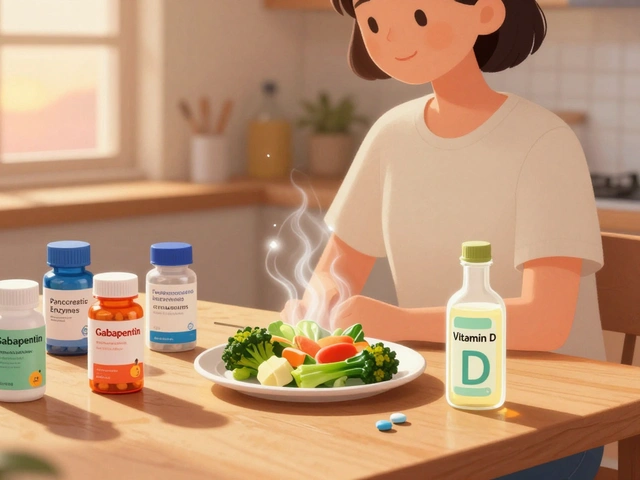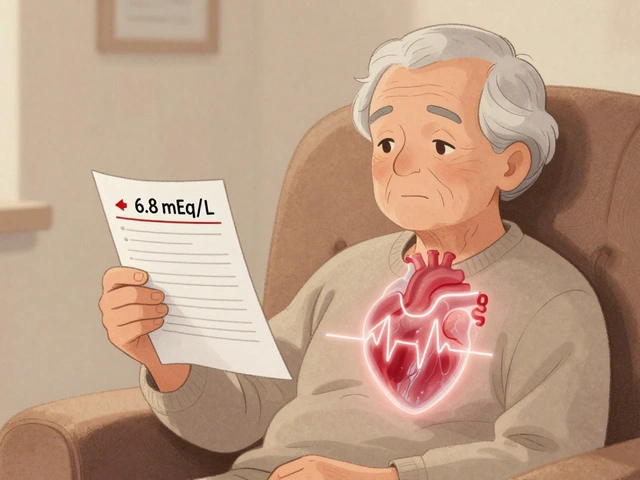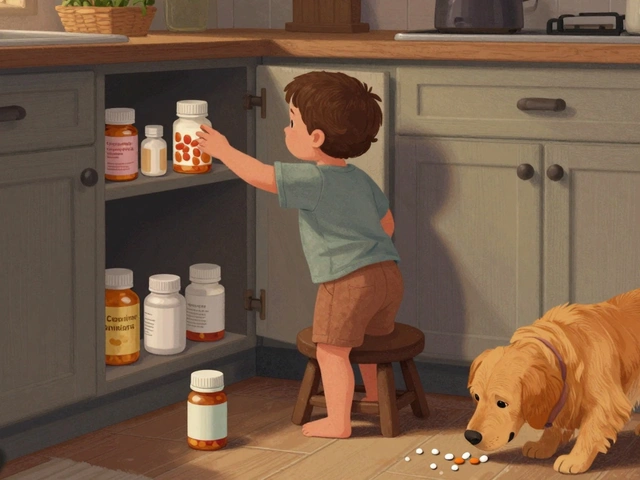Vitamin D: Benefits, Testing & Safe Supplement Guide
Vitamin D isn’t just for strong bones. It helps your muscles, supports immune function, and affects mood and energy. A simple blood test — 25‑hydroxyvitamin D — tells you if your level is low, normal, or high. Knowing that number solves a lot of guesswork.
What vitamin D does and how we measure it
Your liver turns vitamin D into 25‑hydroxyvitamin D (25‑OH D). Doctors use that lab value to decide if you need more. Common cutoffs: under 20 ng/mL (50 nmol/L) is deficient, 20–30 ng/mL is low, and 30–60 ng/mL is adequate for most adults. If your level is outside this range, your provider can recommend a plan.
Vitamin D helps your body absorb calcium and keeps bones stable. Low levels can cause fatigue, muscle weakness, and make fractures more likely. Raising a low level often improves energy and muscle strength within weeks.
Easy ways to raise and maintain levels
Sunlight: Short daily sun exposure (10–30 minutes) to arms and face can boost levels. Skin tone, season, and where you live change how much you need. Sunscreen blocks vitamin D production, so balance sun safety with short unprotected exposure when sensible.
Food: Fatty fish (salmon, mackerel), fortified milk or plant milk, egg yolks, and canned tuna add vitamin D. Food alone usually isn’t enough if you’re deficient.
Supplements: Vitamin D3 (cholecalciferol) is the preferred form for most people. For general maintenance, many adults take 1,000–2,000 IU daily. If you’re deficient, providers often prescribe higher short‑term doses (for example, 50,000 IU weekly) and then recheck your blood. Always follow medical advice for high doses.
Take vitamin D with a meal that has some fat — it absorbs better that way. Look for supplements tested by third parties (USP, NSF) to avoid low‑quality products.
Who should test or consider supplements? Older adults, people with dark skin, anyone with limited sun exposure, those with obesity, people who have had gastric bypass or conditions that affect fat absorption, and those taking certain medicines. Anticonvulsants (like phenytoin or carbamazepine) and long‑term steroids can lower vitamin D levels.
Watch for risks: Very high vitamin D raises blood calcium. Symptoms include nausea, weakness, frequent urination, and kidney stones. Don’t take large doses long term without doctor supervision.
Practical tip: Get a 25‑OH D test before starting high‑dose supplements. If you treat a deficiency, recheck after 8–12 weeks to make sure your level is in the target range. If you’re unsure what dose is right, talk to your primary care provider or pharmacist — they can suggest a safe plan based on your labs and health history.
Small changes — testing, a short daily sun break, or a simple D3 pill with breakfast — often fix most low vitamin D problems. Ask your provider for a test and a clear treatment plan.
22
Unlocking the Sunshine Vitamin: Is Your Vitamin D Intake Sufficient?
Vitamin D is essential for strong bones, a healthy immune system, and overall wellness, yet many people don't get enough of this vital nutrient. While sun exposure is a natural source, dietary supplements may help fill the gap, especially in areas with long winters or for individuals with limited sun exposure. This article covers the importance of Vitamin D, potential deficiency risks, ways to boost your levels through diet and supplements, and how to choose the right product for your needs.
Latest Posts
Popular Posts
-
 Acromegaly: Understanding Excess Growth Hormone and Effective Treatment Options
Acromegaly: Understanding Excess Growth Hormone and Effective Treatment Options
-
 Chronic Pancreatitis: Managing Pain, Enzyme Therapy, and Nutrition
Chronic Pancreatitis: Managing Pain, Enzyme Therapy, and Nutrition
-
 Dangerous Hyperkalemia from Medications: Cardiac Risks and Treatment
Dangerous Hyperkalemia from Medications: Cardiac Risks and Treatment
-
 How to Keep Medications Safe from Children and Pets at Home
How to Keep Medications Safe from Children and Pets at Home
-
 Over-the-Counter Medication Safety: Hidden Ingredients and Interactions You Can't Afford to Ignore
Over-the-Counter Medication Safety: Hidden Ingredients and Interactions You Can't Afford to Ignore


